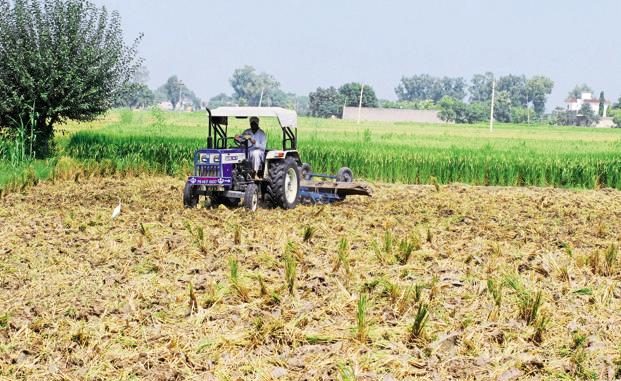
By Rajani Sinha
Reducing the dependence of rural masses on agriculture will help improve the overall income of the rural population
Around two-thirds of India’s population is in rural areas and a large proportion of this population lives in abject poverty. According to the ICE 360° Household Survey conducted in 2016, of the bottom 20% of India’s income quintile, 89% live in rural areas. There is an urgent need to improve the economic scenario in rural India to have a sustainable and robust growth model for the country as a whole. The recent assembly election results in Saurashtra reiterate the need for the government to focus on rural India.
The Union finance minister recently said that the agriculture sector is the government’s top priority because the country’s economic growth is not “justifiable and equitable” unless the benefits are reflected in the farm sector. National Sample Survey Office (NSSO) data shows that more than one-fifth of rural households with self-employment in agriculture have income less than the poverty line. Agriculture labour productivity in terms of gross value added (GVA) in India is less than a third of that in China and 1% of that in the US. In 2016, the government had announced its intention of doubling farmer incomes by 2022. One big way in which farmer incomes can get a boost is by improving farm productivity (ratio of agriculture output to agriculture inputs).
The productivity of most crops in India is well below the global average. Farm productivity can be improved through better irrigation facilities, technology improvement, diversifying towards higher value added crops (like fruits, vegetables, spices, condiments), and increasing crop intensity. Better price realization for farmers is the other big step that can help in improving income. This is where cutting out the middlemen and introducing agriculture marketing reforms becomes critical. There needs to be a mechanism in place to ensure that agriculture prices do not fall below the minimum support prices (MSP). For instance, last year we saw the prices of pulses fall below the MSP, causing distress to farmers. The model APMC (agricultural produce market committee) law does propose reforms in the form of treating the entire state as a single market, removal of fruits and vegetables from the purview of mandatory trading in the APMC market, promotion of electronic trading, etc. However, a lot more needs to be done in the area of agriculture marketing reforms.
Apart from the agriculture sector, there needs to be increased focus on agriculture-allied sectors if we want to improve overall rural income. The livestock sector, which contributes around 4% to India’s gross domestic product (GDP), is particularly critical. India has a mixed crop livestock farming system, with livestock becoming an important secondary source of income. Small and marginal farmers have high dependence on the livestock sector. Hence, measures to boost livestock sector growth and productivity will have a significant impact in alleviating rural distress.
But rural India does not mean only agriculture and agriculture-allied sectors. Interestingly, the share of agriculture in rural output is 39%, whereas the rest is contributed by the manufacturing, construction and services sectors. However, a large 64% of rural employment is in the agriculture sector. Hence, reducing the dependence of rural masses on agriculture as a source of income will help improve the overall income of the rural population. According to a NITI Aayog report, income per farmer is around one-third of the income per non-agriculture worker. Even with other development parameters improving in the Indian economy over the last few decades, income disparity between agriculture and non-agriculture workers has remained at around these levels.
There has been a substantial growth in employment in the construction sector in rural areas. But, again, construction is a low-paying sector. Improvement in employment in the manufacturing and services sectors will be critical in improving rural income. The manufacturing sector in rural India contributes 18% to rural output, but employs only 8% of the rural workforce. The rural workforce finds it difficult to get absorbed in the manufacturing sector. This is where improving education facilities and skill development programmes in rural areas will play an important role.
Services sector growth in rural areas could also play a critical role in improving rural income. Sectors like transport and storage have recorded reasonable growth in the rural area. However, there is need to further increase the contribution of the services sector to rural output. The services sector contributes around 27% to rural output, as against 55% to India’s GDP. A strong push to sectors like food processing, warehousing and logistics will be very beneficial as it will help push up farmer incomes, reduce the wastage of perishable agriculture commodities and provide employment to rural workers.
Villages are India’s backbone, contributing around 46% to the country’s net domestic product and employing 70% of the total workforce. While it is very critical to increase farmer incomes, it is even more important to increase overall rural incomes. And this could be achieved through reducing the over-dependence of the rural population on agriculture as a source of income. A suitable push needs to be given to infrastructure development and industrial and services sector growth in rural areas. What is also very critical is to impart skills to the rural workforce appropriately to enable them to get absorbed in the non-agriculture sector.
Rajani Sinha is a Mumbai-based corporate economist.
Source: Livemint

Leave a Reply